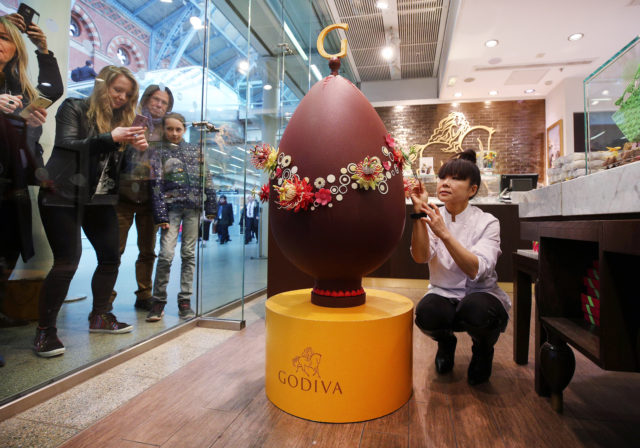In recent years, PR and marketing has been rapidly evolving, driven by technological advancements and the adoption of generative AI tools. Companies increasingly rely on digital channels to reach their customers. AI and technology are poised to become the FOMO (fear of missing out) trigger in all things PR and marketing, not least in ecommerce, where the consumers are now perpetually digitally engaged.
A report by ResearchAndMarkets stated that the global AI market is expecting growth from $58.3 billion in 2021 to $309.6 billion by 2026. This growth is driven by increasing demand for AI-powered solutions especially in PR and marketing demands.
How is AI making a difference in PR and marketing
AI is being used to analyse consumer behaviour, optimise advertising campaigns, and personalise customer experiences. Furthermore, by its very nature it is then able to autonomously take the data and idealise the potential it is seeing without the store owner or CMO needing to be involved whatsoever. In fact autonomous generative AI predictive personalisation solutions, such as leading exponent SwiftERM, are driving the marketing far in advance of ChatGPT, which still necessitates human involvement and time consuming processes that the AI aspect has already outgrown. Therefore, companies that fail to embrace AI are at risk of falling behind their competitors.
Efficiency in data analysis: The key benefits of AI in your PR and marketing is the ability to analyse large amounts of data quickly and accurately. This allows companies to gain insights into consumer behaviour and preferences, which can inform their marketing strategies. According to a survey by Salesforce, 67% of marketing leaders are using AI to improve their understanding of customer needs and preferences. Sadly many still assume that this merely dictates additional actions by them to do more using the data, rather than equally identifying and adopting solutions which have moved forward likewise and have developed further stages or operation in the process already..
Media Monitoring: In Public Relations, AI is making a difference through effective media monitoring. AI tools can quickly scan through millions of news articles and social media posts to identify mentions of a brand or product, helping PR teams to stay on top of the latest trends and consumer sentiments.
Crisis management: Another area where AI is proving invaluable is in crisis management. AI-powered algorithms can analyse large amounts of data in real-time to identify potential issues and provide insights to PR leaders into how to mitigate them before they escalate into a crisis.
Personalised Consumer Experiences: AI is helping in creating personalised customer experiences. For example, chatbots can provide customers with instant support and answer common questions. This expedites customer service leading to greater satisfaction and also cuts down on the stress of customer facing teams. According to a report by Juniper Research, chatbots are expected to save businesses $8 billion annually by 2022.
On the creative front, AI is also being used to improve the effectiveness of PR campaigns that are emerging with ideas on what is trending and how they can add value to customers. By analysing data on consumer behaviour and preferences, AI can help PR teams craft more targeted and personalised messaging that resonates with their target audience, and don’t have to wait for the consumer to arrive at your site. This leads to higher conversion rates and a greater return on investment for both customer and CMO.
Can there be limitations?
The increasing use of AI in PR and marketing, like everything else, is not without its challenges. Bias in AI algorithms is a big concern which could lead to discriminatory practices in areas such as recruitment and advertising. It is therefore important for companies to ensure that their AI tools are built using diverse and representative data sets. Since AI tools often learn a lot of information that is fed into it, there could be potential security threats which should be taken care of by being mindful of confidential client information.
On the automation front, AI can complete work and provide information quickly but there will always be a need for human creativity and empathy in its results, especially in the PR and marketing industry. But ai delivers phenomenal application of the creativity once that element is done. As such, companies should view AI as a tool to enhance, rather than replace human employees who will always bring emotional intelligence and creativity to the table. All said, most companies will have to leverage AI for gaining an edge over the rivals. According to a study by AdRoll, companies using AI for their campaigns saw a 28% increase in click-through rates and a 50% decrease in cost per acquisition. This isn’t surprising given that AI can boost growth in any organisation if used mindfully.
As the famous quote by William Pollard goes, “Without change there is no innovation, creativity, or incentive for improvement. Those who initiate change will have a better opportunity to manage the change that is inevitable.”






One Response
Mmm interesting while generative AI has indeed ignited a transformation in public relations and marketing, it also presents challenges.
As businesses lean more on AI, there’s a risk of losing the personal element that sets each brand apart, leading to potential market uniformity.
Also, overreliance on digital channels may exclude those less tech-savvy, resulting in lost opportunities.
However, these challenges shouldn’t overshadow the enormous potential AI offers. The goal is to find the perfect balance. Companies can leverage AI, while preserving the human factor in their marketing plans.
Merging AI’s power with human-led initiatives can help businesses grow effectively while maintaining their unique voice.
Incorporating generative AI requires a balancing strategy – it’s about using tech to enhance human efforts, not supplant them.
This approach fosters a more comprehensive and effective PR and marketing strategy, creating a win-win situation for all stakeholders. But regardless let’s see how the future looks and plays out.
In the meantime thank you for a wonderful post I will look out for more of these from you.